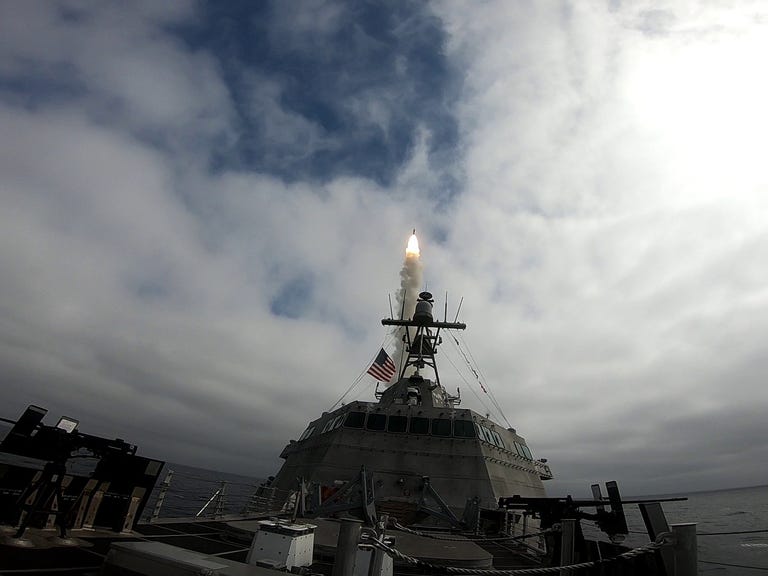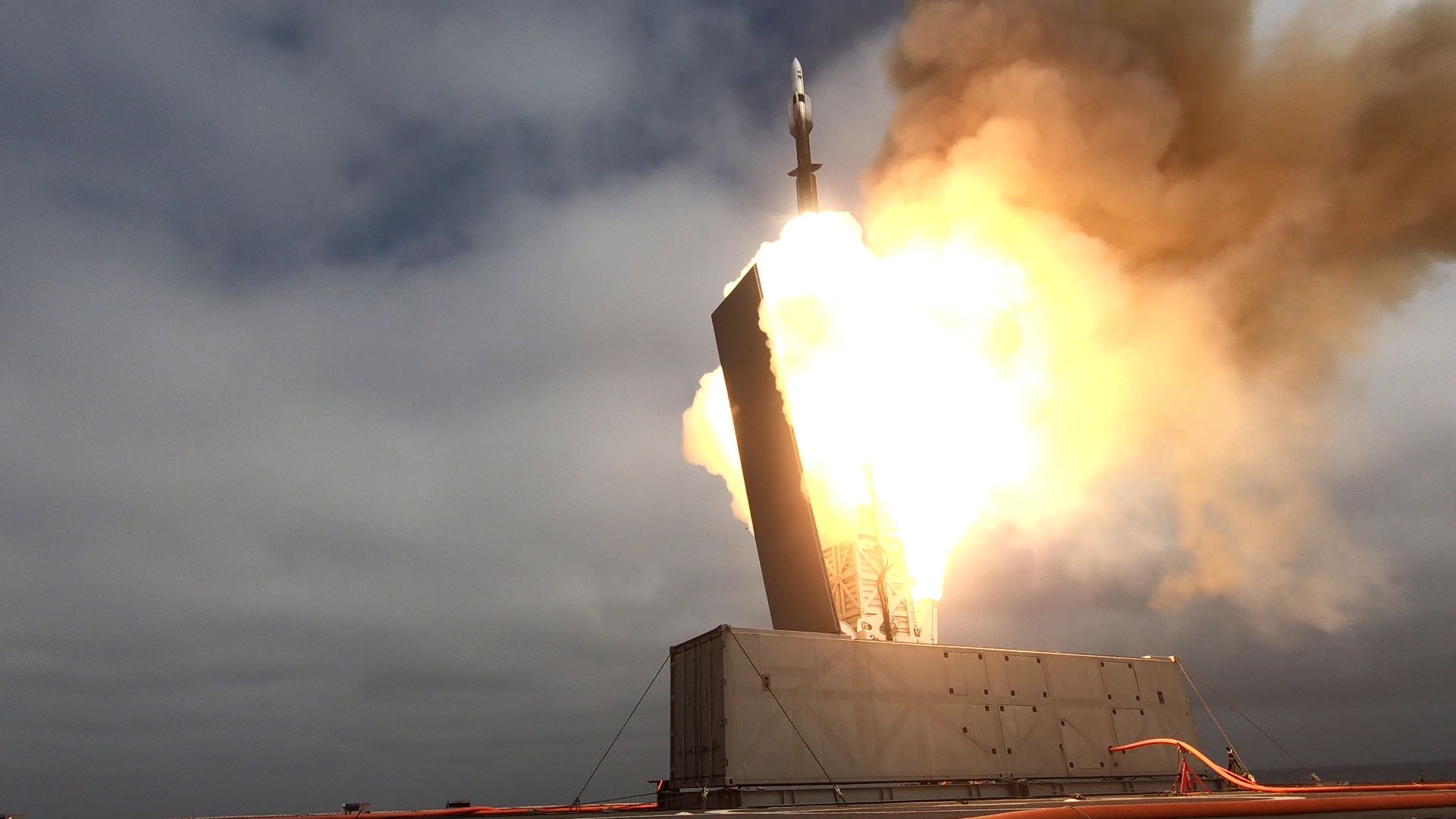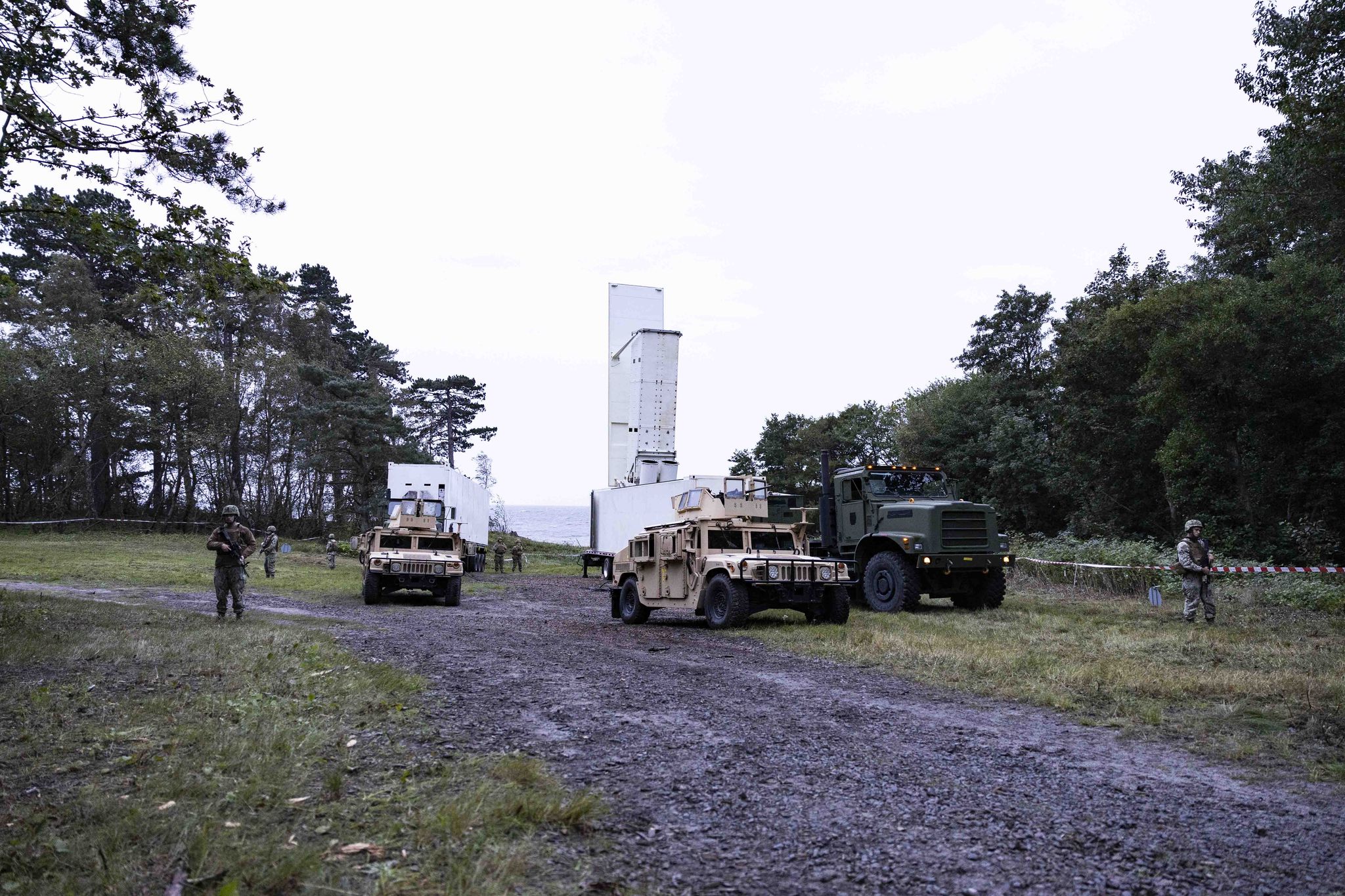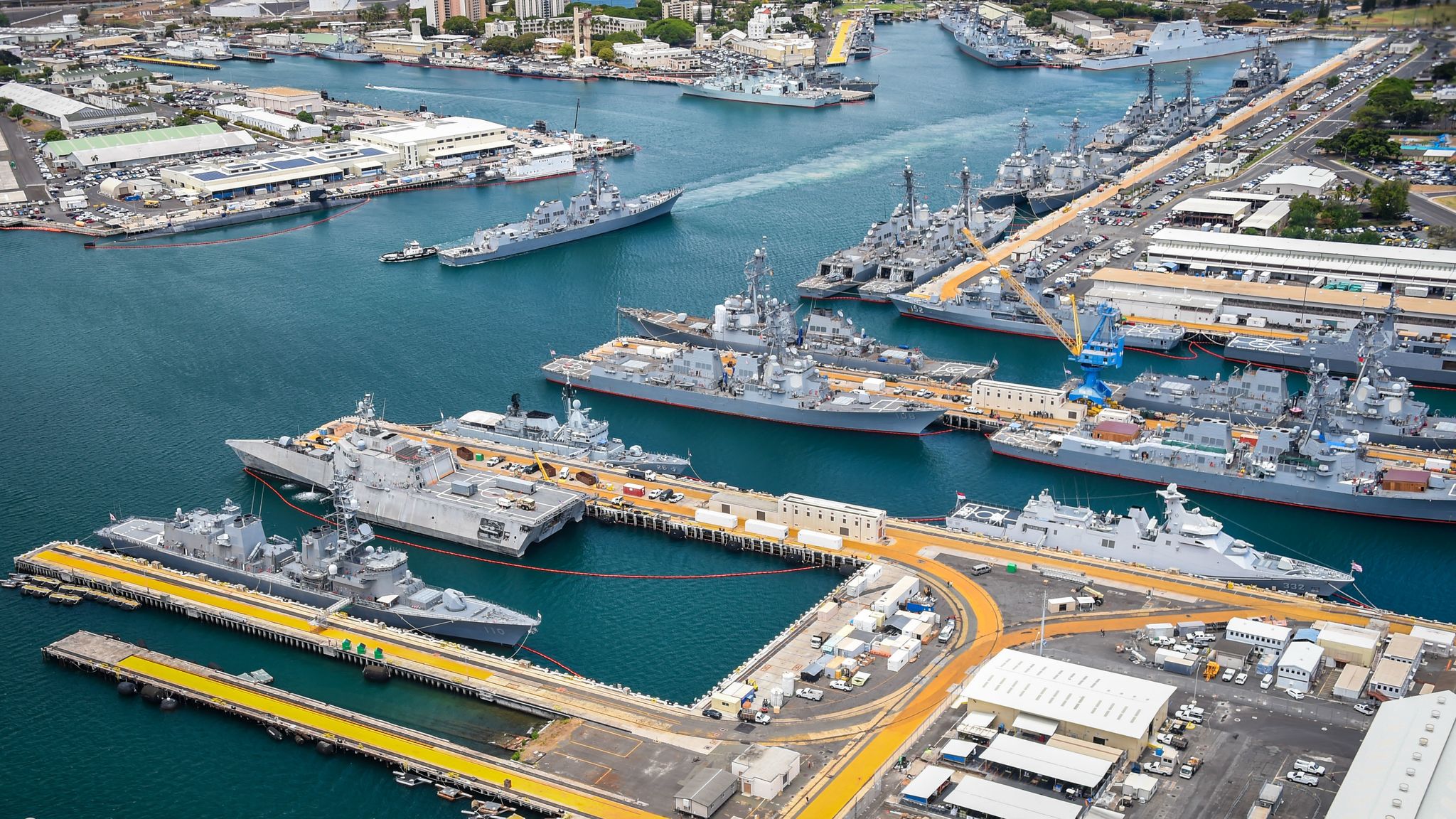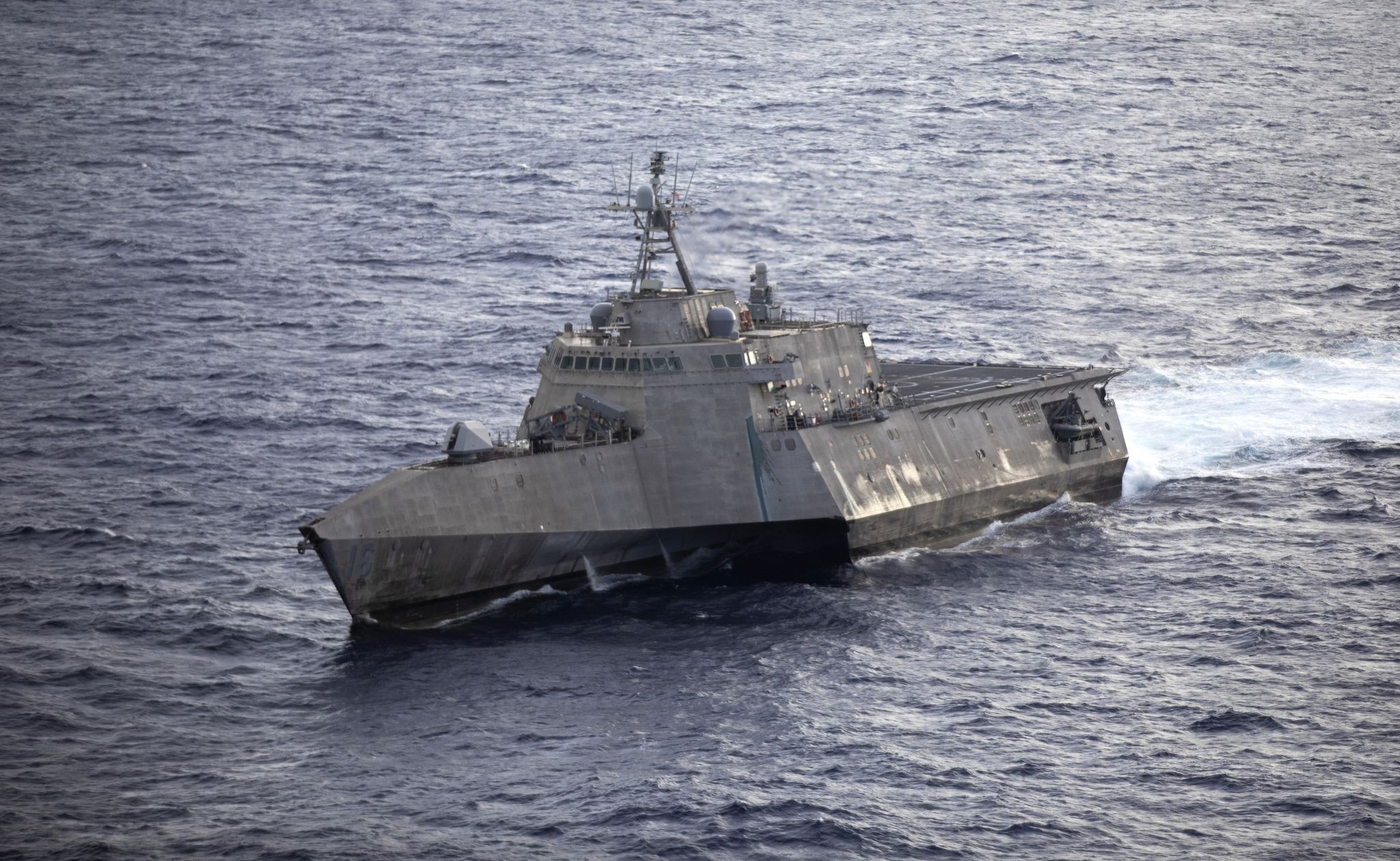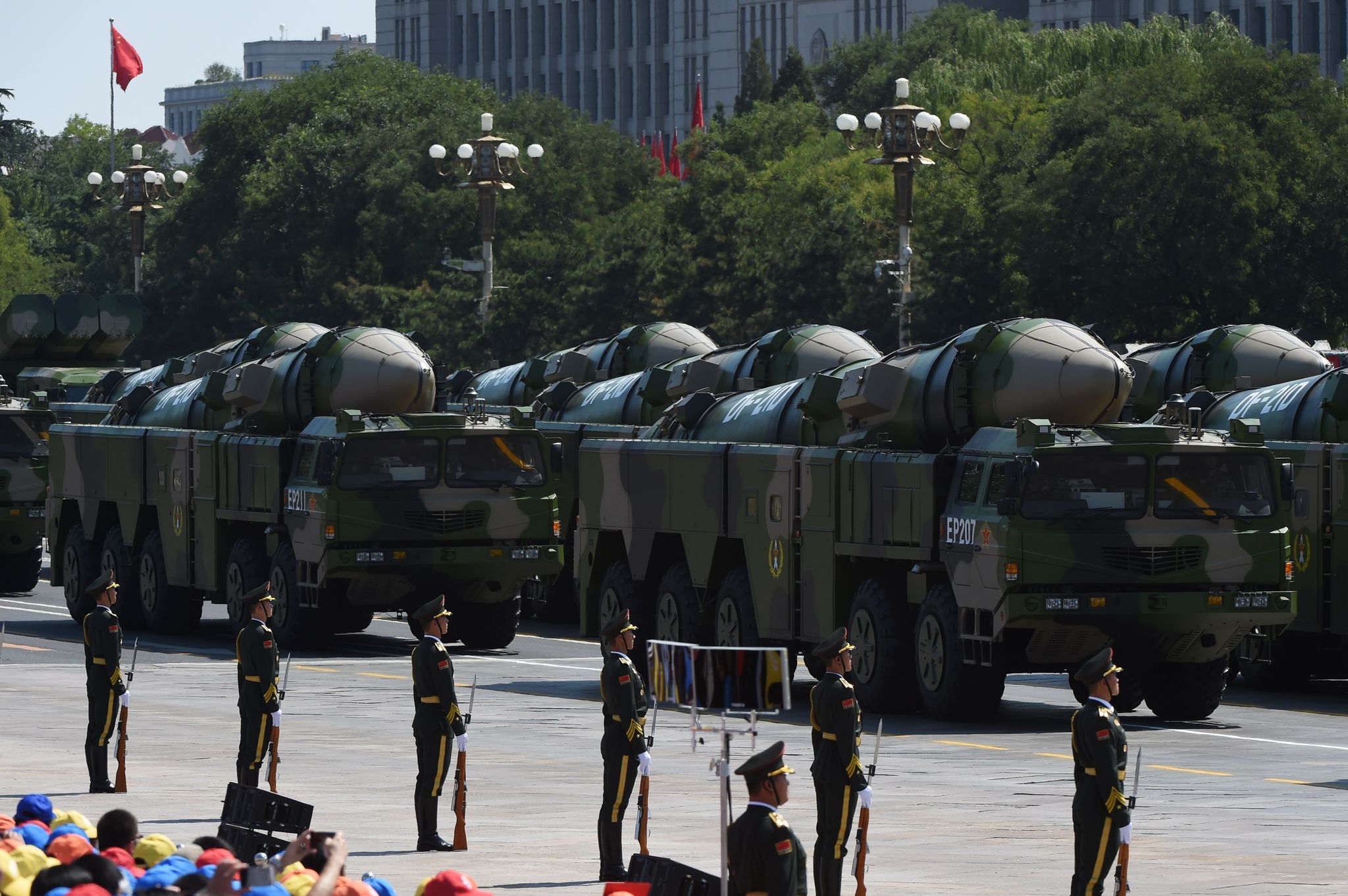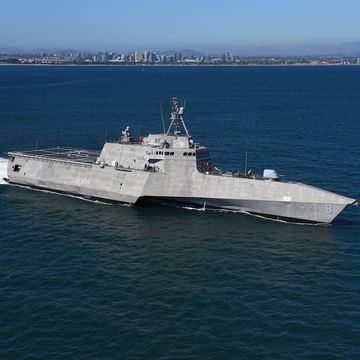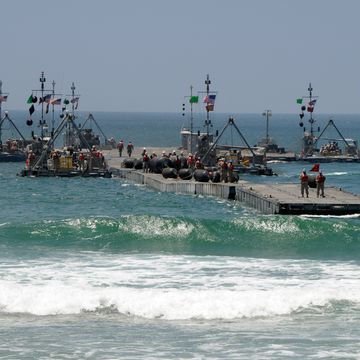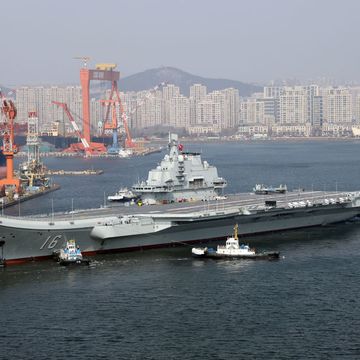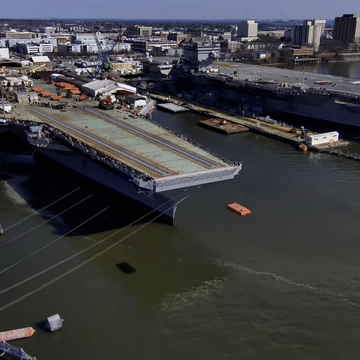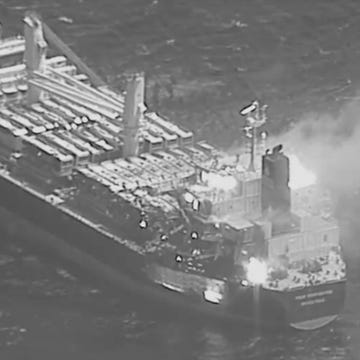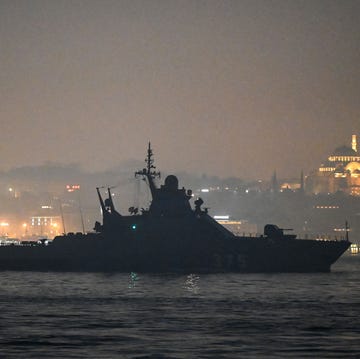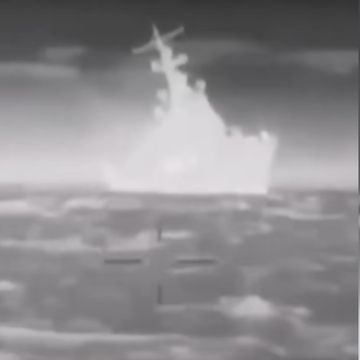On September 18, the Independence-class littoral combat ship Savannah was spotted leaving San Diego with some curious objects on its flight deck, instead of the usual Seahawk helicopter or Fire Scout drone. Instead, the ship was transporting a 40-foot-long grey container and trailer-mounted radar—both connected by long neon-orange cables to the vessel’s superstructure.
The radar was, curiously, an AN/TPQ-53 “Firefinder” counter-battery radar, used by the U.S. Army (and in combat by Ukraine’s ground forces) to calculate the position of hostile ground artillery so as to launch retaliatory fire. Meanwhile, the non-descript grey container had the snooze-worthy designation Mark 70 Mod 1 Payload Delivery System.
But as it turns out, the boring grey box could enable the slight corvette to hold its head a little higher in the company of U.S. destroyers and cruisers bristling with powerful missiles.
The U.S. Pacific fleet announced last week that it had successfully test-launched its SM-6 supersonic missiles in the eastern Pacific to strike a “designated target” (seemingly, a surface target.) The container, therefore, may have carried up to four of the 6.6-meter-long missiles.
You can see the launch of one the missiles—which accelerates up to 3.5 times the speed of sound—in the video below.
Also known as the RIM-174 Standard Extend Range Active Missile (ERAM), the SM-6 is a highly versatile, long-range, radar-guided air defense missile (max 150 miles) equally capable of destroying sea-skimming cruise missiles, high-flying aircraft, and medium-range ballistic missiles.
But it also proved suitable as quick-reaction weapon against maritime or ground targets—so much so that the Army is actually putting SM-6s in modified Mark 70s to serve as ‘mid-range capable’ surface-attack weapons.
The SM-6’s Mach 3.5 speed makes it a challenging target for air defenses, and its active radar seeker should allow for the tracking of moving targets like ships or ground vehicles. Admittedly, its 140-pound warhead may be insufficient to ensure the destruction or crippling of larger warships, but a strike-optimized enlarged SM-6 Block 1B version is in development with longer range and hypersonic speeds (Mach 5+).
The SM-6’s speed and versatility is valuable, given the challenge of figuring out the right mix of air defense and surface-attack missiles to load onto a warship. That doesn’t come cheap—each missile costs nearly $5 million. But it’s much more powerful than any of the weapons a Littoral Combat Ship is designed to carry.
Ordinarily, integrating a new class of weapon unsupported by a ship’s existing launchers requires an expensive and time-consuming R&D program and installation, with costs easily running into the hundreds of millions of dollars.
Containerized missile launchers have recently grown in popularity as a way to rapidly deploy powerful weapons onto trucks, trains, or ships (military and civilian alike) without years of R&D and installation.
In a naval context, containerized missiles condense the engineering problem to making sure that the missiles works with the container launcher, the container is seaworthy and can be bolted onto a ship, and any wired and wireless connections can both link the container to the ship’s power supply and fire control and sensor systems.
Of course, containerization is not without complications and costs. For instance, it’s not as space efficient as missile cells penetrating into the decks of larger surface warships—an LCS with containers on its flight deck is one that can’t put valuable aircraft there instead. Containers may also impose performance deficits due to their electrical demands (competing with radars and perhaps future close defense lasers) and added weight. And while LCSs are designed for stealth, deck containers likely increase radar cross-section unless carefully situated and/or fitted with conformal paneling.
Still, there’s no denying that the Mark 70 enables a little LCS to (briefly) punch as hard as a much more powerful destroyer. Each of its four full-length missile cells can swing up from their horizontal position for vertical launch, and they are all compatible with any weapons used in the Mark 41 vertical launch systems of powerful U.S. destroyers and cruisers.
That encompasses a staggering range of weapons—long-distance Tomahawk cruise missiles, quad-packed RIM-162 Extended Sea Sparrow air defense missiles, SM-3 ballistic missile interceptors, and more.
It’s worth noting that the SM-6’s range likely exceeds that of the Savannah’s SPS-77(V)2 Sea Giraffe radar, which is instrumented out to 110 miles and up to 66,000 ft. To fully leverage the SM-6’s capabilities, an LCS would likely receive target cueing or sensor data from another ship or aircraft with more powerful sensors (or one that has crept closer to the target).
The desire to simulate handing-off targeting data may explain the AN/TPQ-53 radar. Perhaps the test mission concept revolved around using the radar to detect an attack and pass on coordinates for a rapid counterstrike to be executed by the containerized SM-6s. Admittedly, the AN/TPQ-53’s instrumented range of 38 miles seems too short to be practical in a naval role other than coastal fire support. Perhaps it is seen as a good testing stand-in for more powerful alternatives used in an operational context.
Indeed, the combo of a TPQ-53 radar and Mark 70 container were previously spotted on the LCS Tulsa during the 2022 RIMPAC exercise—though further details about how they were used aren’t public.
Turning a new page for the Navy’s troubled Littoral Combat Ships?
The LCS program—intended to generate a fleet of two different types of small, cheap, fast, and stealthy multi-role corvettes—has long been beset by troubles with their hybrid-electric propulsion systems, modular mission payloads and crewing concepts. These have been issues to such an extent that the Navy has controversially decommissioned several rently-built LCSs because it didn’t want to pay the costs of sustaining them.
The problem is that the LCS program failed on two fronts—at achieving the cost-efficiency and versatility it was sold on, and by being comically ill-suited to the Navy’s strategic priority of preparing for a possible knockdown-drag-out fight with China’s powerful People’s Liberation Army Navy (PLAN).
Intended to skirmish with Iranian motorboats, LCSs were badly outgunned by China’s smaller Type 056 corvettes. Kyle Mizokame once simulated an engagement involving LCSs (armed with just 57-millimeter guns and Hellfire anti-tank missiles with a range of 7 miles) and Chinese corvettes (lobbing YJ-83 anti-ship missiles from up to 75 miles away). It went about as well as one would expect.
The trimaran Independence-class has had fewer problems, boasts a large flight deck supporting up to two helicopters, and will begin integrating specialized counter-mine warfare mission packages starting in 2025. Meanwhile, the Navy’s primary intended fix for the firepower deficit in LCSs is to install Naval Strike Missiles with an engagement range of 110 miles.
In any case, the LCS is far from the only platform on which the Navy is considering employing the SM-6. The first launch of an SM-6 from an Mark 70 involved the Ranger, an unmanned drone combat ship (USV) intended to help pioneer a potential future “ghost fleet.”
The Navy has also test-fired SM-6s from Mark 70s on trucks in Europe as an example of a rapid-deployable coastal defense capability.
Container madness and the hypothetical war over Taiwan
Why is the Navy tinkering with containerized missiles? Most likely, it’s thinking about ways to quickly and cheaply generate more long-distance missile shots in the event of the nightmare scenario: a full-on naval war defending Taiwan from a Chinese invasion.
A series of wargames simulating such a conflict by the CSIS think tank found that the results of such a conflict ground down to inventories of long-range missiles. The U.S. won, at great cost, when it had enough missiles that it could launch from relatively safer distances (300+ miles) to sink China’s amphibious landing ships. Closing to use shorter-range weapons proved suicidal due to China’s large missile arsenal—unless those weapons were delivered by stealth platforms like submarines or stealth jets.
While an LCS is stealthy for a warship, it would remain at extreme risk if it tried to close within range to employ even Naval Strike Missiles. But, under certain circumstances, slapping down container launchers on their flight decks could allow these craft to contribute useful ship-sinking shots from hundreds of miles away in a fight dominated by much bigger destroyers carrying around 100 missiles each.
The Navy is keen on ‘distributed firepower’ as of late, so it can avoid losing too many eggs per basket (ie. destroyer) hit with a hostile missile. In a wartime emergency, slapping containerized missiles on anything that floats could represent a quick and dirty way to achieve distributed mass without the years needed to build lots of costly, dedicated warships.
Indeed, the possibilities for containerized missiles go far beyond LCSs—think amphibious carriers, drone ships, or even militarized civilian container ships.
An operational concept could see destroyers, with their powerful radars, anti-air defenses, and anti-submarine defenses, screening an otherwise vulnerable squadron of arsenal ships loaded with missile containers. The destroyers, along with the air- and sea-based surveillance assets, could relay firing data to the ‘blind’ arsenals ships to launch missiles en masse at enemy targets.
Slower (but very stealthy) LRASM anti-ship stealth missiles and cheaper, very-long-range Maritime Strike Tomahawks—both with big, ship-sinking warheads—may better fit the job than pricy SM-6s. However, the forthcoming strike-optimized SM-6 Block 1B could represent an attractive alternative.
Despite the possibilities opened up by missile containers, there are many technical and operational issues to resolve. For example, the questions of how and where the containers could be repaired and replenished remains. Furthermore their reliability, their durability at sea, and the integration of their connecting power and control system cabling into ships must all still be stress-tested.
This likely explains Savannah’s test of this powerful capability. If the Navy is enticed, more such containerized test shots are likely follow—potentially involving additional types of ships and munitions.
Sébastien Roblin has written on the technical, historical, and political aspects of international security and conflict for publications including 19FortyFive, The National Interest, MSNBC, Forbes.com, Inside Unmanned Systems and War is Boring. He holds a Master’s degree from Georgetown University and served with the Peace Corps in China. You can follow his articles on Twitter.
